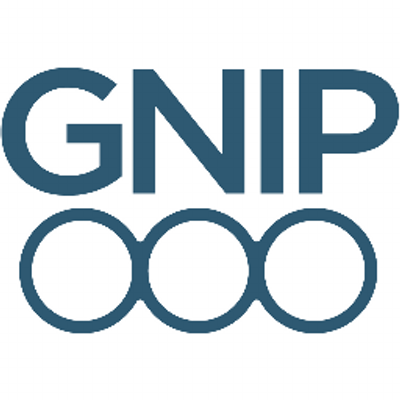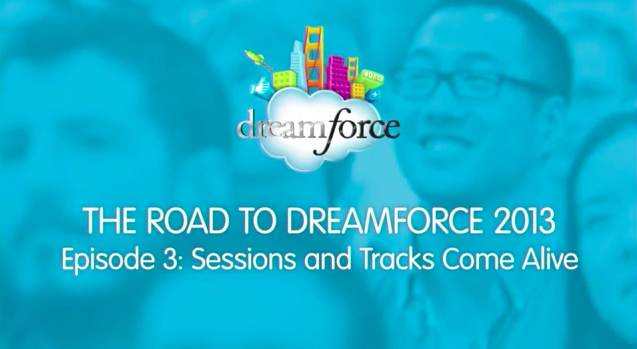
Penny shared her insights into the changing relationships between CMOs and CIOs on The Economist‘s marketing blog, Lean Back. The post looks at how CMOs need CIOs more than ever as the marketing budget grows.
She writes, “Regardless of how much injustice CIOs feel, the success of their companies is increasingly reliant on their teams learning to align with CMO teams whose priorities—and very nature—are incredibly different from their own.”
Read the full blog post, “Why CMOs won’t lock CIOs out of the C-Suite,” here.

We are pleased to announce that Penny has been chosen to emcee the Anita Borg Institute’s Women of Vision awards banquet. The banquet honors women who make significant contributions to technology, and one company that has demonstrated measurable results in attracting, retaining and advancing women in technical roles at all levels. The banquet is attended by thousands of women technologists each year and will feature Hilary Mason, Data Scientist in Residence at Accel Partners and Scientist Emeritus at bitly.
Congrats to Penny!
You can see the full press release, published January 7, here.
Dreamforce is over, so it’s time to make good on our promised donation to Soles4Souls!
We had a wonderful time meeting so many people this year. The booth team was constantly busy—and we loved it. The numbers show just how busy we were: in addition to countless conversations, we gave 582 product demos! At $2 donation per demo, that’s… a rounded-up total of $1,200 going to delivering shoes to people in need.
Soles4Souls is focusing efforts on the typhoon victims in the Philippines, and have committed to donate 200,000 new pairs of shoes to the cause. They need help getting the shoes there, though, and we’re extremely happy that we can do our part to get the people affected back on their feet.
If you’d like to donate, Soles4Souls is accepting donations through their Southeast Asia Disaster Fund website.

By Penny Herscher
Your sales team is the backbone of your company, but how do you get stellar sales reps to stick around? Turnover is an issue everywhere, but one of the secrets to sales success is finding a way to maintain rock star salespeople.
Costs of turnover
Aside from losing top talent, whenever a salesperson departs, it leaves human resources working overtime to find new talent. Recruitment can drain precious resources. In addition to onboarding and training, you will be paying significant salaries to employees who have yet to achieve full productivity. On the other hand, there are less obvious costs. When a valued team member leaves, it can cause ripples among other employees, according to Christina Gomez for Executive Board sales blog. Losing a trusted colleague can cause decreased morale and sales productivity. As a result, clients can receive gaps in continuity, and sales can be lost. Suffice it to say, you don’t want to lose salespeople, but how do you get them to stick around?
1. Hire right the first time
Do an impeccable job of hiring from the beginning. Hiring can be difficult process at the best of times, but putting in maximum effort will give you greater returns. Don’t be lazy about recruitment. Realize there are different types of salespeople and no one personality type creates the ideal salesperson. What kind of seller does your team need right now? Asking candidates to take a personality test can help to guide you in whether they’ll be a good fit, as Brittany Griffin suggests on Inside Sales. Even if a candidate seems like a winner, delve deeply into their background. Be sure to actually check references and ask follow up questions to find out if there’s anything they aren’t telling you.
2. Provide incentives for top sellers
A big problem with some companies is that they quickly advance salespeople out of vital roles. According to Griffin, a lot of businesses use appointment setters as sort of a training pool before salespeople move on to other more prestigious jobs. These valuable employees specialize in finding sales opportunities for closers and every month they remain, they become 40 percent more productive. Instead of making this an entry-level position, provide incentives for workers to remain there. Every time you advance someone from appointment setter position, you have to replace them, and you’re starting over at zero productivity. Make this a job to aim for, not just a rest stop on the way to something better.
3. Find the right climate
A good company culture can encourage salespeople to remain. According to Gomez, a judgment-oriented culture results in about 15 percent less turnover than other types of management systems. A judgment-oriented culture is defined by an organic environment that is geared more toward building relationships than a sales agenda. Such businesses are innovative and open, with guidelines but no strict rules. Give your employees space to be creative and develop their own methods and they will reward you by sticking around longer.
4. Build leadership and community
For businesses across the board, relationships among staff are the prime drivers of happiness in the workplace. Strong salespeople value good leadership and a staff that can work effectively as a team. According to a recent survey from TINYpulse, transparency is the No. 1 factor that influences employee happiness. Workers want managers to clearly outline their expectations and be open with them about what works and what doesn’t in the sales setting. Even more than that, employees value openness from supervisors, they want it from co-workers. In fact, co-workers were the single most-cited reason employees were happy in their jobs. To make sure sales teams are working together optimally, schedule frequent team-building activities.

Ashutosh Joshi is FirstRain’s Principal Data Analytics Engineer. He attended The Big Boulder Initiative last month and learned some interesting things. Read on:
Last month the Big Boulder Initiative, organized by one of our vendors, Gnip came to San Francisco and I was lucky enough to go on behalf of my team. FirstRain is a Gnip Plugged in Partner and we consistently get great value from being part of the program and attending Gnip events.
The meet was attended by about 20 companies of varying size – from large companies to a few start-ups with less than 10 employees – all Gnip customers. The conference started with Gnip CEO Chris Moody giving an introductory talk about the objectives and agenda of the conference. What was different about this conference, compared to others that I’ve attended, were its objectives. The goal of the meeting was to discuss what the biggest obstacles, current and future, facing the social-data industry and what steps could be taken to remove those obstacles (boulders). Gnip recognized that it was in a unique position to understand the concerns of both the publishers – the creators of social data like Twitter and Facebook – and the companies who, like FirstRain, use that content to deliver high-value business solutions. A main focus of the Boulder Initiative events is to reach out to its customers to identify the problems they, and the industry in general, face, and to brainstorm solutions to them.
Several problems were proposed, but the biggest that emerged were:
1. Cost of Data
2. Ethics of Data Use
3. ROI to be achieved
4. Access to data
We broke up into teams and discussed short- and long-term steps to be taken around each of these areas. The problem that I found most interesting was the problem of access to data. There is so much data out there, but the access to that data is restricted to those that can afford to license the expensive pipelines. Also, because the data is costly, the primary focus of those accessing the data tends to be turning a profit. Having freer access to the data would lead to more innovation, bringing down the cost of data creation as well–which could be facilitated if the publishers could grant limited/free access to academia or non-profits.
The social data industry is in its infancy, and is still figuring out all the advantages and pitfalls of the different decisions it makes. Gnip’s Big Boulder Initiative events are valuable because they introduce standardization around social data. This includes the different properties of data, like the chain of custody and control that each individual element – the creator, publisher and multiple levels of consumers – can have over the data at different stages of data analytics and the finished product, to the ways to access the data and the rights of the consumer. It was a great to be a part of this process of discussing and proposing standards that hopefully will facilitate more innovation in an up-and-coming industry.
Unlike many other vendor conferences I have attended, it was’t about Gnip giving us demos of their latest features and then trying to sell them with a day of presentations pushing products–It turned out to be quite the contrary. At the end of the event, a board of 3 attendees was elected and they along with 9 similar board members from three more Big Boulder Initiatives around the country were tasked with acting on the solutions proposed in the conference. All in all, a good day for partners and, most importantly, long term for the users that use our services leveraging social data.

We are extremely excited to announce that our intrepid CEO, Penny Herscher, will lead a panel discussion about on the role of women in technological advancements in manufacturing at the Grace Hopper Celebration of Women in Computing.
The Grace Hopper Conference is nearly 20 years old, and is the largest technical conference for women in the world. It’s designed to support and showcase the contributions of women in computing. Conference presenters are leaders in their respective fields, representing industry, academia and government. Since promoting women in the technology is a cause that is near and dear to Penny (she’s even on the board of the Anita Borg Foundation, the organizers of GHC), we are incredibly excited to attend.
Our Panel: “The New Industrial Revolution: How Advanced Manufacturing is Creating Disruptive Opportunities for Women.”
This panel will discuss and explore the effects of exciting new technologies—from 3D printing to desktop design and fabrication—that have the potential to enable a new generation of female entrepreneurs. The panel will explore how these innovations have already begun changing the world of inventing and manufacturing, impacting the evolution and democratization of global manufacturing and defining the new role these technologies can play in the economic empowerment of women. Penny will be joined by Christine Furstoss (GE), Jennifer Lawton (MakerBot) and Kristen Turner (Ponoko).
If you’re going (and/or if this topic interests you), let us know by tweeting us at @FirstRain or write on our Facebook wall!
Conference and presentation details:
Who:
Penny Herscher, FirstRain CEO with Christine Furstoss, Jenny Lawton and Kristen Turner
Where:
Minneapolis Convention Center (MCC), Room 200 D-G
When:
3:45 – 4:45 pm on Thursday, October 3, 2013

FirstRain is revving up for Dreamforce 2013, and to make sure we’ve got all the latest information, we’ve been watching The Road to Dreamforce on Salesforce Live. It’s been really informative and has helped get our creative juices flowing—except they stillwon’t tell us who the band is! Come on, guys!
The best part is that anyone can participate. If you have a question, you can easily ask in real-time: just go on Twitter and use #salesforceLIVE during the session. You might even get an on-air shout out and be famous like Justine!
If you missed yesterday’s episode, don’t worry. You can watch it here.
By Ryan Warren, Vice President of Marketing
Your customer relationship management system is important to not only your sales workflow, but also enhancing customer intelligence. Maybe you have already seen significant CRM ROI or are just on the verge of a CRM investment. Either way, CRM software has exploded in use across the globe. According to recent research, the business community is estimated to not only continue moving toward CRM systems, but the technology may overtake other types of software solutions. The market value of CRM could more than double by 2017.
CRM Will See Market Boosts
Gartner's latest forecast, "Enterprise Software Markets, Worldwide, 2012-2017, 2Q13 Update," found CRM systems, business intelligence (BI) and analytics applications had a total market revenue of $13.1 billion in 2012. The number is a 6.8 percent increase when compared to 2011's revenue of $12.3 billion. Gartner estimated that this total growth will not only continue in the next five years, but CRM will lead the way with the most segmented gains of all enterprise software categories.
According to Forbes, the study highlighted how CRM will continue to surpass previous expectations, as it accelerates in value faster from quarter to quarter. Experts seem to be constantly changing their estimates as the CRM market seems to perpetually expand. By 2017, CRM is projected to hold approximately $36.5 billion in revenue. With 2013 at about $20.7 billion, in five years CRM will almost double in revenue. In 2016, Gartner estimated CRM will eclipse even enterprise resource planning in value. Dan Sommer, principal research analyst at Gartner, said numerous enterprise software systems, such as BI, will continue to make strides well into the future.
The value of CRM and BI software in the global marketplace is set to remain solid in the long term. As more corporations begin to understand the essential need of building and managing client relationships, enterprise software will provide ROI into the future.
ROI? It Might Be Subjective
But seeing ROI of your CRM investment relies not on simply having the software, but knowing how to use it. According to News Factor, an IT resource, the power of CRM tools lies in how you implement the knowledge you gained from the software. While sales reps need to be able to glean market insights quickly and easily through customer analytics, they also should be able to employ and manage that intelligence in the real world.
According to the Corporate Executive Board, monitoring your CRM system's ROI is a complex process that involves more than just looking at the finances – it incorporates informal aspects as well. So how do you do this? CEB suggested that CRM ROI only happens through high levels of adoption. That means everyone needs to get on board with using your CRM. It may get easier to track your customer insights and get a better picture of your CRM investment as the market expands – it just might be a subjective view.
Seeing a return for implementing CRM into your sales team can be difficult, but as the technology advances and more enterprises get on board, it may get a bit easier. Driving ROI relies on building customer relationships and really understanding what they need to be successful. CRM helps you to manage that – just make sure you completely adopt the system.
By Ryan Warren, Vice President of Marketing
Let's face it, I am no different then most sales and business development people, we all need to optimize our schedules to get everything done that needs to be done. But let's be honest, meetings tend to take up a large bulk of our work day. While meetings are crucial for professionals to collaborate with each other, just because you cut out a chunk of time for a certain meeting does not necessarily mean you have to ensure every minute is dedicated to that meeting. But we have other options, social collaboration tools both internal like Chatter and Yammer and external like Linkedin and Twitter. Yes, sales reps often feel in their element in person, but your schedule is already jam-packed with things to do. Use technology. Get on networking sites to connect with colleagues. Employ customer intelligence analytics that do a lot of client research for you.
Question if There is a Better Way
In a recent LinkedIn article, entrepreneur Shane Snow advised professionals to say goodbye to long meetings and invest in networking. While abandoning meetings altogether may not be viable for many sales reps, Snow recommended professionals take a page out of the entrepreneurial playbook and always question whether they need to be in a meeting or if there is a better solution out there. If you need to connect with a colleague about a project, Snow suggested going digital with either email or social media.
Only schedule time for a meeting when you need absolutely need to – entrepreneurs understand their time is valuable and refuse to sit in a 30-minute meeting with people who may not even have need to be there when a seven-minute one in front of the water cooler does just fine.
In her Entrepreneur blog, Carol Tice, CEO of TiceWrites Inc., reminded professionals unnecessary meetings can cost nearly $37 billion every year for the U.S. economy. We may be recovering from the recession, but we still can't afford to lose that much money on an annual basis for something irrelevant. So Tice recommended sales reps go online to connect with each other. Networking sites – and even networking meetings – can produce stronger results than more traditional methods of communication.
You may still need to go to a meeting every once and a while because it's still standard procedure for most companies, and it is easier to close a sale face to face rather than on the phone or through an email. However, using all the tools at your disposal can significantly reduce how much time you spend in meetings every day.
We’re extremely excited this morning to announce this morning a new white paper, produced by our partners at social data provider Gnip.
It’s a really nice piece detailing the ways in which FirstRain provides highly relevant customer intelligence for enterprise sales and marketing professionals, including a nice case study by FirstRain customer Flextronics. As Greg Mihran, senior director of Global Sales Enablement at Flextronics puts it in the white paper: ”It was imperative that Flextronics have access to, and the ability to monitor, social data from a business intelligence perspective–that’s where FirstRain and FirstTweets came in. FirstRain has helped our company evolve and gain awareness of tools and data sources we’d never leveraged before, emphasizing the importance of incorporating and monitoring social media data.”
Gnip, is a key partner for FirstRain, as they provide the stream of Twitter data behind our FirstTweets capability, which is a key differentiating capability for our users. In turn, Gnip values FirstRain because we provide an utterly unique approach to B2B enterprise intelligence—and one that’s particularly different from most of their clients, who are overwhelmingly in the Social Media Monitoring or Brand Management space.
As Gnip’s Elaine Ellis tweeted out this morning:
And while these services like Saleforce.com’s excellent Radian6, are extremely useful and powerful for enterprises, they don’t solve the fundamental problem of enterprise sales and strategic marketers in harnessing Twitter data to deeply understand their customer businesses.
With this white paper, companies can see not only how FirstRain makes that possible, but how companies like Flextronics are translating that into real results. Click the image of the white paper below to check it out!
